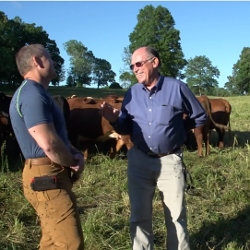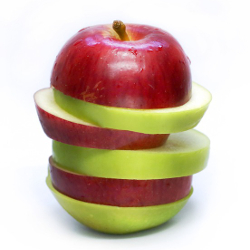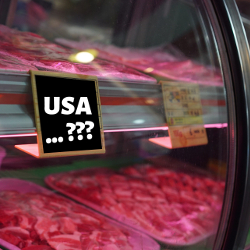“The health of the planet and the health of the people are one. . . Health, starting with the soil, to plants, animals and humans must be the organizing principle and the aim of agriculture, commerce, science, of our lives and of international trade.” – Vandana Shiva
Part of the work we do at OCA involves calling out corporations. For polluting the environment. For poisoning our food. For paying off elected officials to write regulations that put public health at risk. For intentionally misleading us, through false advertising and labeling claims.
It never ceases to amaze us how these corporations—led and staffed by real people, just like us—justify their bad behavior.
Recently, some of us sat around a boardroom with a group of corporate executives from a large, multinational factory farm company (which will remain unnamed for now).
We talked about the public health crisis caused by the rampant misuse of antibiotics on factory farms. We talked about animal welfare concerns. We reminded them of their company’s role in the devastating pollution of U.S. waterways, especially in the Midwest.
They, in turn, sang the same old tired tune: We’re feeding the world.
They aren’t. According to the United Nations Food & Agriculture Organization, 70 percent of the world’s food is produced by smallholder farmers—and they produce that food on only 25 percent of the world’s land.
What this corporation and others like it are doing is feeding us a line of bull, while they “feed” their CEO salaries and big shareholders.
We can’t let these corporations continue to poison our environment with impunity. We just can’t. Because like it or not, our own health is directly related to the health of our soil, water, air—and of course, our food.
“The health of the planet and the health of the people are one.”
We won’t stop confronting corporate factory farms. Until they stop their bad behavior.
And we won’t stop working with the media and with the courts, when necessary, to let consumers know exactly what these corporations are doing—and why it matters.
We’re committed. But we need your support. Please consider a donation today? Thank you!
Make a tax-deductible donation to the Organic Consumers Association
Make a tax-deductible donation to OCA’s Millions Against Monsanto campaign
Support Citizens Regeneration Lobby (CRL), OCA’s sister lobbying organization Donations to CRL, a 501(c) (4) nonprofit, are not tax-deductible
Click here to learn about other ways to support our work
















